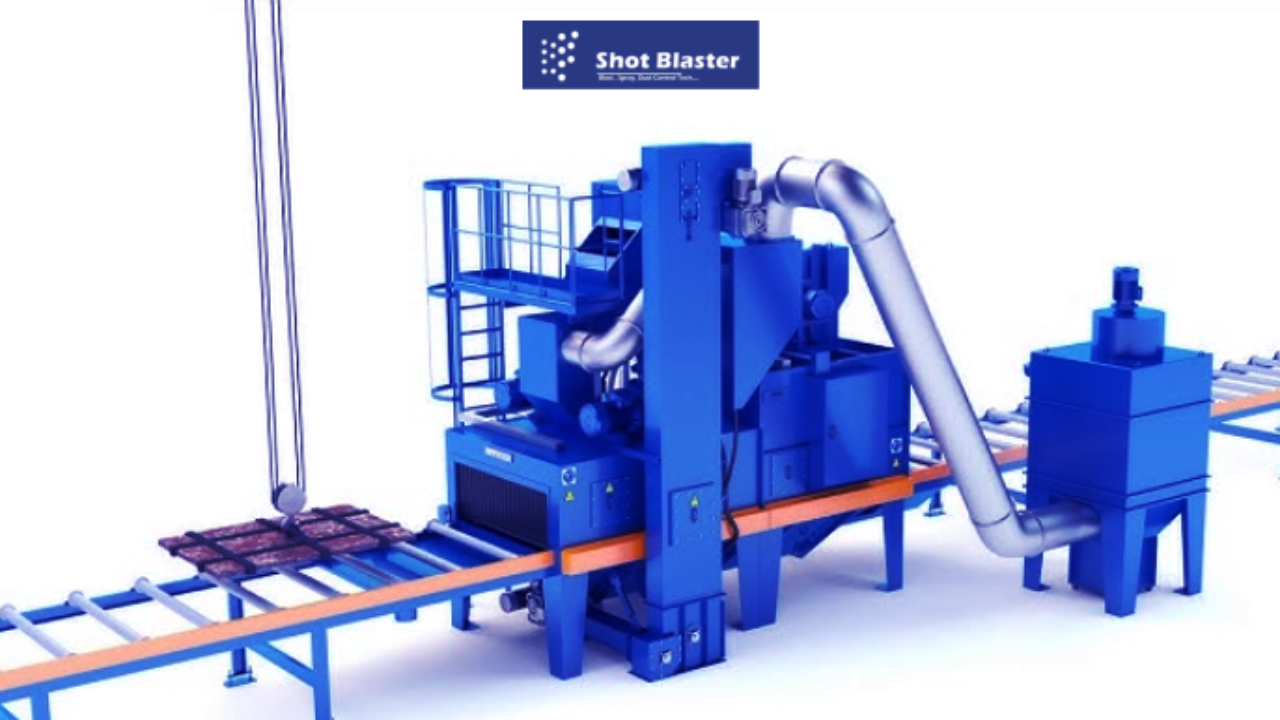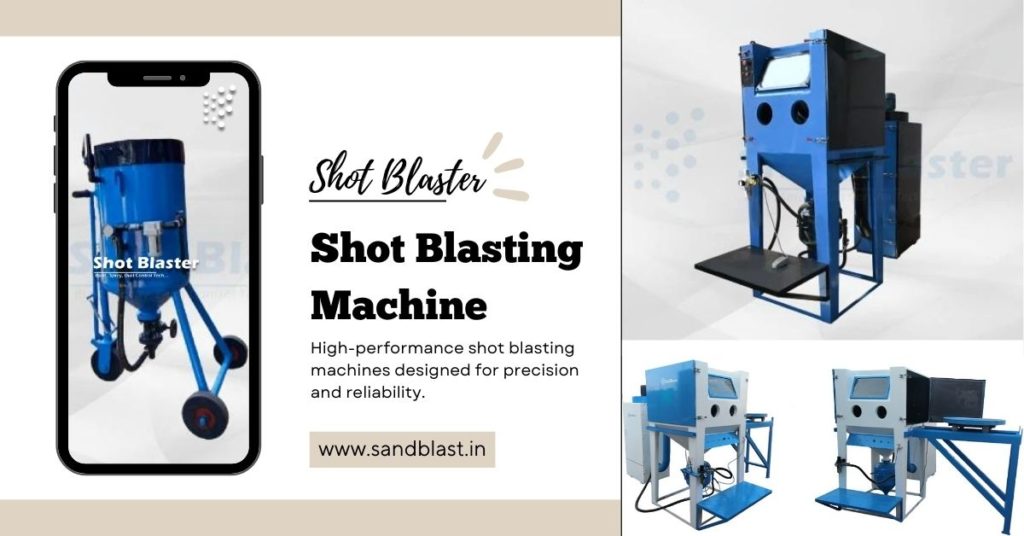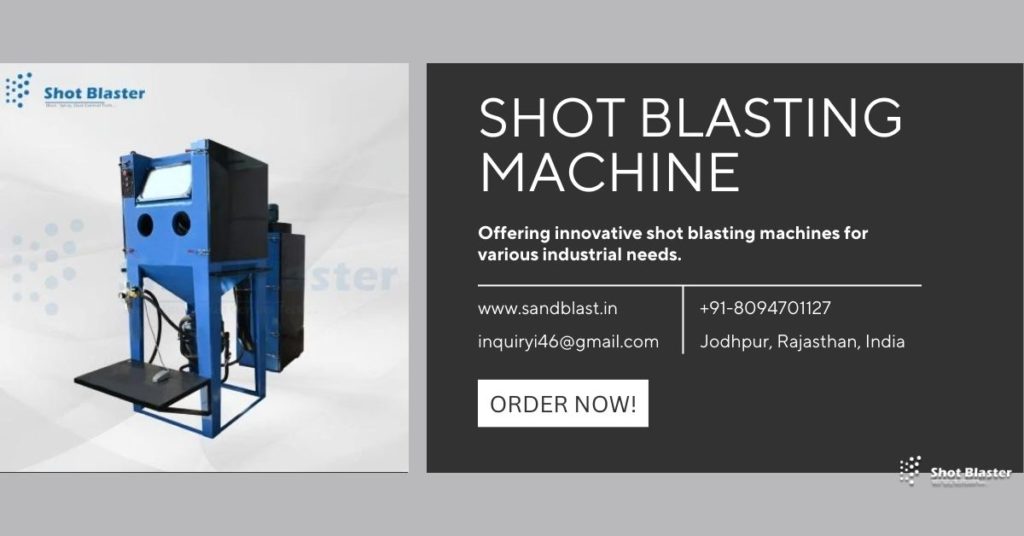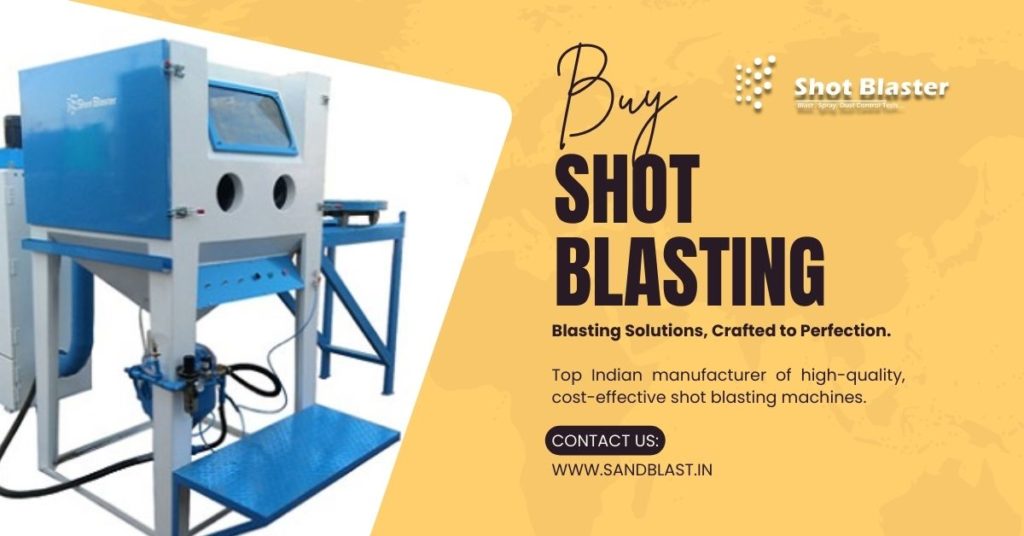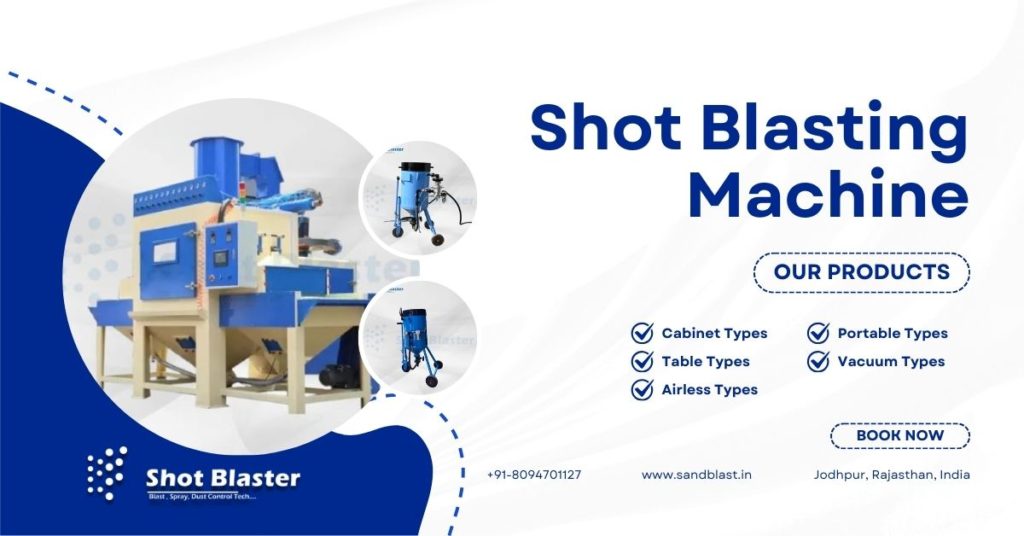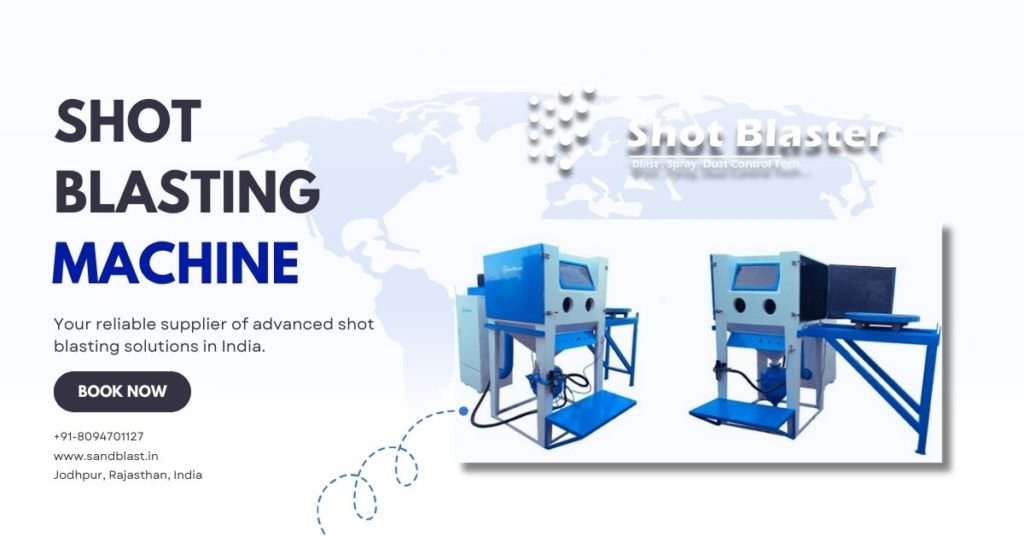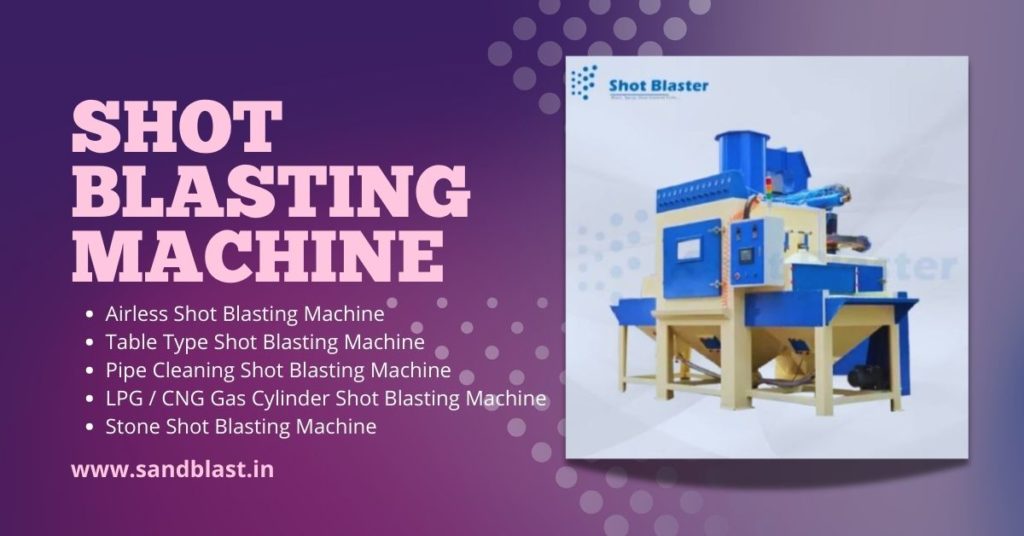Discover how an automatic shot blaster can enhance your competitive edge. From improving productivity to reducing costs, learn 9 ways this machine can revolutionize your operations.
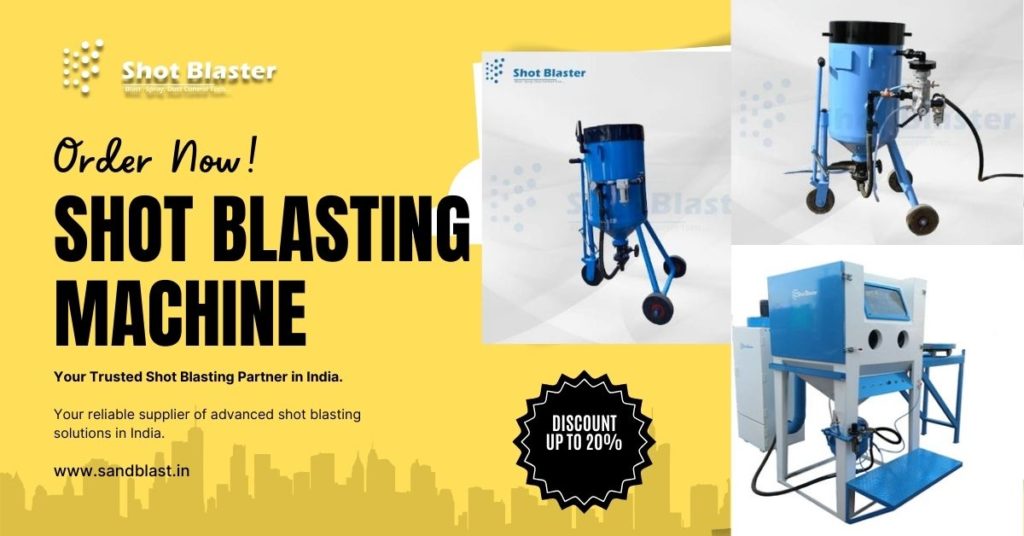
Introduction
In the fast-paced world of manufacturing and industrial applications, staying ahead of the competition is crucial. One of the most effective ways to gain a competitive edge is by adopting cutting-edge technology. One such game-changer in the surface preparation industry is the automatic shot blaster. If you’re wondering how exactly this equipment can give your business an advantage, you’re in the right place! In this article, we’ll explore 9 ways an automatic shot blaster can boost your competitive edge, revolutionizing your operations, increasing efficiency, and ultimately saving you both time and money.
From surface cleaning to surface profiling, automatic shot blasters offer a host of advantages that manual methods just can’t match. The benefits are manifold, and in this article, we’ll break them down to show how an automatic shot blaster can be the secret weapon you need to stay ahead of your competition.
1. Increased Efficiency and Productivity
Let’s face it: time is money in the industrial world. If you’re still relying on manual methods for surface preparation, you’re likely wasting precious time and resources. Automatic shot blasters can drastically reduce the time spent on surface treatment processes. These machines can work continuously for hours, often faster than manual labor, without compromising on quality.
- Faster Processing: Automatic shot blasters can treat large areas of surfaces in a fraction of the time it would take using traditional methods.
- Consistency: Unlike manual labor, which can vary depending on the operator, automatic machines offer a consistent level of quality and precision.
In short, by incorporating an automatic shot blaster, you streamline operations, enabling your team to focus on other important tasks, which ultimately boosts overall productivity.
2. Improved Surface Quality and Consistency
When it comes to surface preparation, consistency is key. Variations in surface quality can negatively impact the subsequent processes, such as coating or painting. Automatic shot blasters provide a uniform cleaning and profiling process, ensuring that every treated surface is the same.
- Perfect Profile: The automatic shot blaster is capable of producing a controlled profile, making it ideal for coating adhesion.
- No Human Error: Since the machine doesn’t rely on human input, the chances of inconsistent results are minimized.
With better surface quality, your final products are more likely to perform better, have longer lifespans, and deliver better results for your clients. That’s the kind of consistency that wins contracts!
Start learning now – https://riyasingh258.blogaaja.fi/how-to-choose-the-right-shot-blasting-machine-for-your-needs/
3. Cost Savings in the Long Run
Yes, Affordable Shot Blasting Machine Like Airo Shot Blast Equipment’s come with an upfront cost. However, the return on investment (ROI) is often substantial. The time saved by reducing labor costs, minimizing waste, and increasing production rates can lead to significant savings.
- Reduced Labor Costs: Fewer operators are needed when you have a machine that does the job more efficiently.
- Less Material Waste: Precision shot blasting reduces material loss, which can help to reduce operational costs.
While the initial investment might seem significant, over time, you’ll find that the savings on labor, maintenance, and waste far outweigh the costs.
4. Enhanced Workplace Safety
Safety should always be a top priority in any industrial setting. The work involved in surface preparation can sometimes be hazardous, especially when done manually. Automatic shot blasters eliminate much of the danger by taking the hazardous tasks out of human hands.
- Reduced Worker Exposure: Operators are less exposed to airborne particles and abrasive materials.
- Cleaner Working Environment: Automatic shot blasters help to contain dust and debris, creating a safer, cleaner work environment.
When workers feel safe and protected, it leads to higher morale, fewer workplace accidents, and less downtime due to injuries.
5. Versatility in Application
One of the greatest advantages of an automatic shot blaster is its versatility. Whether you’re working on concrete, steel, or any other industrial material, shot blasting is suitable for a wide range of applications. The machine can be easily adapted for various tasks, making it a great investment for companies working with different surface types and projects.
- Concrete and Steel: Suitable for preparing both porous concrete surfaces and harder metals like steel.
- Varied Profiles: Shot blasters can provide different surface profiles depending on the requirements, whether for cleaning or texturing.
By offering a versatile solution, you can handle a wider variety of projects, keeping your business flexible and competitive.
6. Minimization of Maintenance and Downtime
Automatic shot blasters are designed for durability and ease of maintenance. With proper care, these machines can last for years, helping you avoid the costly downtime that can come with equipment failure. Since they are engineered to handle continuous operation, maintenance requirements are often minimal compared to older, less advanced models.
- Fewer Repairs: Modern machines are built to last and require fewer repairs, which saves you money and time.
- Easy-to-Replace Parts: Most automatic shot blasters are designed for easy maintenance, so you don’t need specialized knowledge to fix them.
This means you can keep your operations running smoothly without worrying about frequent breakdowns or downtime.
Get exclusive access – https://riyasingh258.blogaaja.fi/a-complete-guide-to-understanding-shot-peening-machines/
7. Energy Efficiency
Given the global focus on reducing environmental impact, energy efficiency has become a top concern for many industries. Automatic shot blasters are designed to be energy-efficient, helping your company reduce its energy consumption and carbon footprint.
- Optimized Power Usage: The newer models of automatic shot blasters consume less energy than their older counterparts or manual methods.
- Sustainable Practices: By reducing energy consumption, you contribute to more sustainable business practices.
With energy-efficient machines, your company can not only save money but also contribute to the growing demand for eco-friendly solutions.
8. Scalability and Customization
As your business grows, so do your needs. Fortunately, automatic shot blasters come in a variety of sizes and configurations, allowing you to scale your operations as necessary. Whether you need a small unit for light work or a heavy-duty machine for larger projects, there’s a model that fits your requirements.
- Scalable Operations: As demand increases, you can scale up the use of shot blasters to meet higher production targets.
- Custom Features: Many shot blasters offer customizable features, such as adjustable blast intensity and automated settings, ensuring that they can adapt to a wide range of surfaces and materials.
This scalability and customization give you the flexibility to evolve with the market and your business.
Get all the answers – https://riyasingh258.blogaaja.fi/the-future-of-surface-finishing-with-airless-shot-blasting-solutions/
9. Reduced Environmental Impact
Shot blasting is an environmentally friendly way of preparing surfaces. The process uses abrasives like steel shot or grit, which are easily recycled. Additionally, newer automatic shot blasters are designed to reduce dust emissions, which is an important consideration for any eco-conscious business.
- Recyclable Materials: The abrasives used in shot blasting can be reused, reducing the environmental impact of waste materials.
- Lower Dust Emissions: With improved dust collection systems, automatic shot blasters minimize air pollution, making your business more environmentally responsible.
By adopting an automatic shot blaster, you not only enhance your efficiency but also show a commitment to eco-friendly practices.
Frequently Asked Questions (FAQs)
Q1: What is the primary function of an automatic shot blaster?
An automatic shot blaster is used to clean, profile, or texture surfaces. It works by blasting abrasive materials, such as steel shot, onto the surface to remove contaminants or prepare it for subsequent treatment like painting or coating.
Q2: How much does an automatic shot blaster cost?
The cost varies depending on the size, features, and brand. Smaller units can start at a few thousand dollars, while larger, more advanced models can run into the tens of thousands.
Q3: Are automatic shot blasters easy to maintain?
Yes, they are designed to be low-maintenance. Regular cleaning and occasional replacement of parts like the abrasive media are usually enough to keep them running smoothly.
Q4: Can I use an automatic shot blaster for different materials?
Absolutely! Automatic shot blasters are versatile and can be used on a wide variety of materials, including concrete, steel, and other metals.
Conclusion
As we’ve seen, there are countless ways an automatic shot blaster can boost your competitive edge. Whether it’s through improved efficiency, reduced costs, or enhanced safety, this equipment offers tangible benefits that can elevate your business. So, if you want to stay ahead of the competition, consider investing in an automatic shot blaster.
Not only will it streamline your operations, but it’ll also ensure you deliver high-quality shot blasting results with minimal effort. Embrace the power of automation and take your business to the next level!


